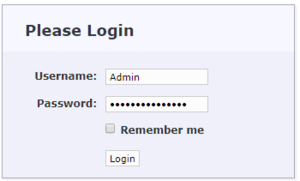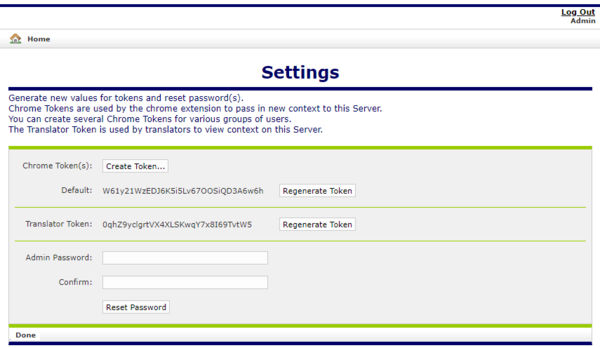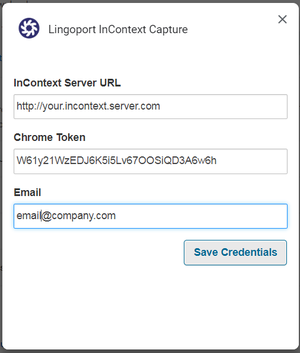InContext Server Users Guide
Browse to your InContext Server and Log In
When the InContext Server is installed, it creates one account with the following credentials:
- Username: Admin
- Password: please.reset.me
Please browse to your InContext Server and log in with the above credentials:
Reset your Admin Password
To reset your password, Click on the Settings link to display the following page:
And then provide a new Admin Password, matching Confirm, and press the Reset Password button.
Passwords need to be at least 6 characters in length and cannot be just spaces. Also, please retain this password as it cannot be recovered by Lingoport, though Lingoport can reset the password for you if necessary.
InContext Server Tokens
The InContext Server manages two kinds of tokens to control access to the Server:
- Chrome Token
- Translation Token
The Chrome Token is used by the Lingoport InContext Capture to send context to the Server. The Chrome Token value configured on the InContext Capture must match one of the Chrome Tokens configured on the InContext Server:
You can create multiple Chrome Tokens to give different groups of users access to the Server. In this way, if you decide to change the Chrome Token for one group of users, it will not affect access for other groups of users.
The Translation Token is used to verify context lookups. The Translator Token value configured in LRM must match the Translation Token configured on the InContext Server.


